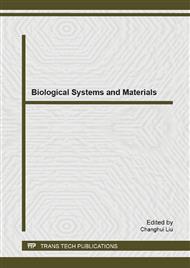[1]
Kraus JF, McArthur DL. Epidemiologic aspects of brain injury [J] . Neurol Clinic, 1996, 14( 2) : 435- 450.
Google Scholar
[2]
Pudenz RH, Shelden CH. The Lucite calvarium a method for direct observation of the brain [J] . Journal of Neurosurgery, 1946, 3: 498- 505.
DOI: 10.3171/jns.1946.3.6.0487
Google Scholar
[3]
Gosch HH, Gooding E, Schneider RC. Distortion and displacement of the brain in experimental head injuries[ J] . Surgical Forum, 1969, 20: 425- 426.
Google Scholar
[4]
Hardy WN, Fost er CD, Mason MJ, et al . Investigat ion of head injury mechanisms using neutral density t echnology and high-speed biplanar X-ray[ J] . Stapp Car Crash Journal, 2001, 45: 1- 32.
Google Scholar
[5]
Chu, C. -S., Lin, M. -S., Huang, H. -M. and Lee, M. -C., Finite element analysis of cerebral contusion, J. Biomechanics, 27(2), 187-194, (1994).
DOI: 10.1016/0021-9290(94)90208-9
Google Scholar
[6]
RUAN, J.S., KHALIL, T., and KING, A. (1991). Human head dynamic response to side impact by finite element modeling. J. Biomech. Eng. 113, 276-283.
DOI: 10.1115/1.2894885
Google Scholar
[7]
KHALIL, T.B., and VIANO, D.C. (1982). Critical issues in finite element modeling of head impact, in: Proceedings of the 26th Stapp Car Crash Conference, pp.87-102.
Google Scholar
[8]
Shugar TA, Katona MG. Development of Finite Element of Head Injury Model[ J] . ASCE, 1975, 101: 223- 229.
Google Scholar
[9]
Cheng LY, Rifai S, Khatua T, et al . Finite element analysis of diffuse axonal injury [ A ] . In: Processing 34th St app Car Crash Conference [ J ] . Orlando, Florida: The Society of Automotive Engineers, 1990. SAE Paper No. 900547.
DOI: 10.4271/900547
Google Scholar
[10]
Willinger, R., L. Taleb, and C. M. Kopp. Modal and temporal analysis of head mathematical models. J. Neurotrauma 12: N4, (1995).
DOI: 10.1089/neu.1995.12.743
Google Scholar
[11]
Nahum, A. M., R. Smith, and C. C. Ward. Intracranial pressure dynamics during head impact. In: Proceedings of the 21st Stapp Car Crash Conference, 1977, p.339–366.
Google Scholar
[12]
Ruan, J. S., T. Khalil, and A. I. King. Dynamic response of the human head to impact by three-dimensional finite element analysis. J. Biomech. Eng. 116: 44–50, (1994).
DOI: 10.1115/1.2895703
Google Scholar
[13]
Kuijpers AH, Claessens MH, Sauren AA. , The influence of different boundary conditions on the response of the head to impact: a two-dimensional finite element study, J Neurotrauma, 1995 Aug; 12 (4): 715-24.
DOI: 10.1089/neu.1995.12.715
Google Scholar


